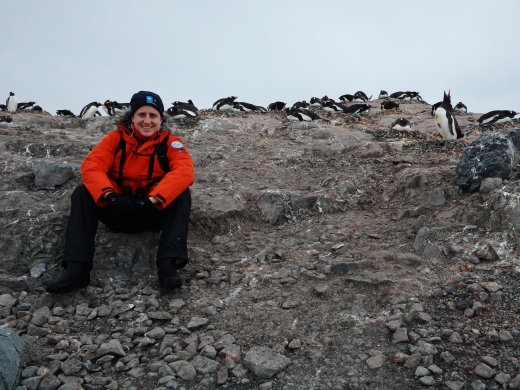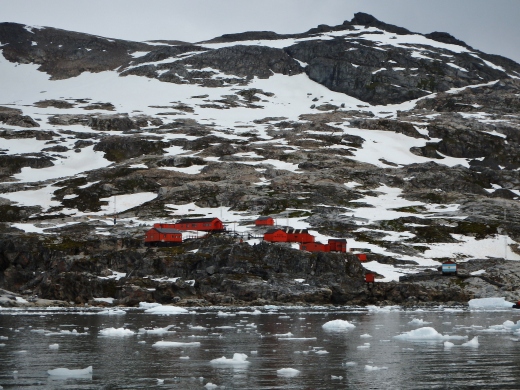
Gentoo Penguin colony on D’Hainaut Island
December 25, 2016
Merry Christmas from Antarctica!
This morning, we dropped anchor in Mikkelsen Harbor, located on the southern end of Trinity Island off the northwestern coast of the Antarctic Peninsula. Our landing on D’Hainaut Island immediately indicated a developed history of whaling, as whale bones were strewn about in various locations. A Gentoo Penguin nesting colony of reasonable size skirted the wall of an old (no longer used) Argentine naval building on the island. Almost comically, two extremely large Elephant Seals had set up camp almost directly in the center of the penguin nesting colony. They were resting (evidence by loud snoring) and seemed to be quite annoying the penguins in the area, who had to walk around them to get to and from the water.
Our plan took us further south that day to the beautiful Cierva Cove, and on the way, we ran into a large pod of very gregarious Type A1 killer whales. Much larger than the Type B2 orcas we saw yesterday, these whales also lacked the yellow/brown coloration, as they are more of an open-water whale (and don’t pick up as many diatoms). These Type A whales are true apex predators; in fact, their main food source is the Minke Whale! The captain maneuvered the ship to follow the whales, and on many occasions, it seemed as though the whales were playing with the ship (and its passengers). I even observed one whale completely invert its body and propel itself belly-up for almost a minute. These whales were truly amazing to observe in the wild.

Type A1 Killer Whale (Orcinus orca)
Cierva Cove represented an incredibly scenic conclusion to the day.
The highlight of this stop was a Zodiac trip with Dr. Conor Ryan to seek out humpback whales. This was such a great experience – to be observing whales in extremely close proximity on a boat with a doctor who has spent his live studying cetaceans! One of the most interesting things we observed during this trip was bubble net feeding, a feeding strategy utilized by Humpback Whales. The whales swim in a circle below desired prey and blow bubbles in this circular pattern. This forms of column of bubbles, which rises and forces the prey to the surface of the water. The whales then move up through the center of this “bubble net” to more effectively catch prey. We watched this process transpiring less than 10 feet from our boat, completely mesmerized.
That evening, we had the honor of hosting for dinner three researchers from the nearby Argentina Base Primavera, a scientific research station. They were very patient in dealing with my extremely rusty Spanish, but I was able to learn that they are studying lichens on the Antarctic Peninsula and are stationed for the entire summer season. Life as a researcher in Antarctica seems quite difficult — these students were having to carefully ration their food and water, and they were extremely gracious for dinner aboard the ship. Before the winter, they would be returning to South American to further analyze their data. One of the students had run out of books to read, so I gave her my copy of Endurance by Alfred Lansing, a chronicle of the Shackleton expeditions to Antarctica.

Base Primavera, an Argentine research station in Cierva Cove
David Walker
Grosvenor Teacher Fellow
Antarctica Expedition
National Geographic Society
Lindblad Expeditions